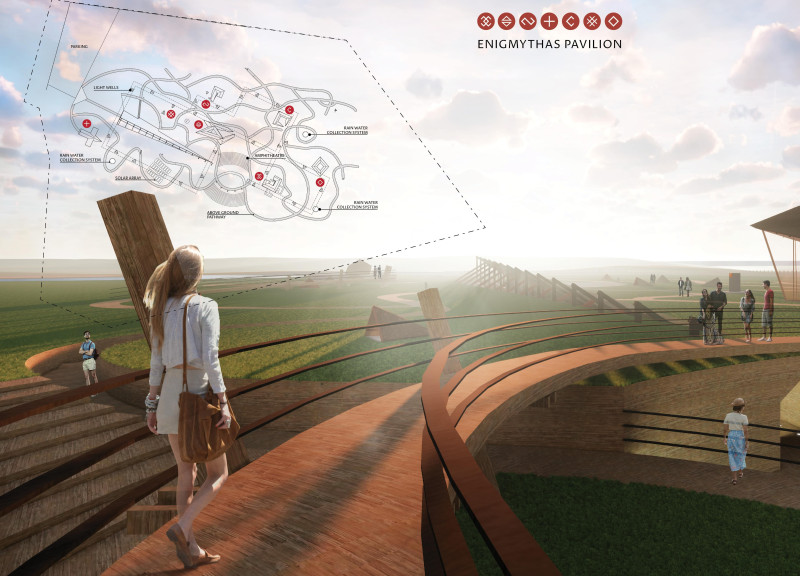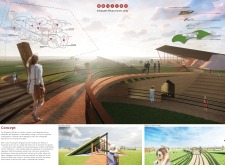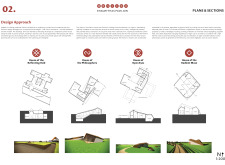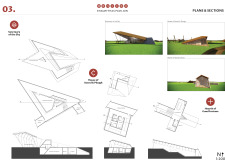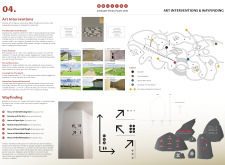5 key facts about this project
The Enigmythas Pavilion is a creative space designed for poets and artists, located in a scenic landscape that enhances its purpose. It represents a vision of a mythical village that never was, aiming to inspire visitors through both its buildings and the surrounding nature. The concept revolves around the idea of complementary opposites, creating an environment that promotes self-reflection and collaborative creativity.
Conceptual Framework
The design of the Pavilion integrates themes of contrast throughout its various spaces. It features huts, a host's residence, a multi-purpose area, and an outdoor amphitheater. Each structure is intended to provide different experiences, balancing solitude with community interaction. The Pavilion highlights oppositional elements, such as light and shadow, which invite visitors to explore the depths of their creativity.
Architectural Integration
The design connects traditional Latvian architectural aspects with modern techniques. The form of the Pavilion arises from the shape of a typical Latvian house, which is then adapted through the inclusion of local cultural symbols. This blend creates distinct geometries that respect historical influences while embracing contemporary design principles, forming a cohesive architectural narrative.
Circulation and Accessibility
Circulation within the Pavilion is designed to enhance the experience for all visitors. A winding pathway draws inspiration from the molecular structure of Latvian amber, while a straight, underground route allows for direct connections between areas. Accessibility is a key concern, with features that accommodate all visitors, minimizing stairs and ensuring easy movement throughout the space. These efforts enhance the overall user experience while ensuring ample natural light and climate control.
Artistic Elements and Wayfinding
Art installations are integral to the Pavilion’s atmosphere, enhancing visitor engagement. Notable pieces, such as the Monolith of the Moment, serve as focal points within the space, while others like Trans-Presence and Cenotaph for the World prompt reflection. Additionally, the wayfinding system employs unique names and symbols for each building, guiding visitors through the site and encouraging exploration.
As visitors approach the Pavilion, they are met by an entry ramp that introduces them to a new experience. The ramp's design creates anticipation, leading into a world where paths and spaces intertwine, drawing guests into the heart of creativity.


